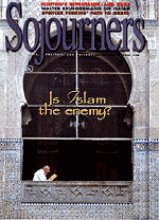In the months since the terrorist bombings of American embassies in Kenya and Tanzania and the massive U.S. cruise missile attacks on targets in Afghanistan and the Sudan, considerable media attention has been focused on militant Islam. Exiled Saudi Osama bin Laden has become the new, sinister symbol for violent Islamic extremism. Various political leaders, pundits, and op-ed writers have dubbed him the worlds most dangerous man. Amidst the daily news of presidential scandal, the faltering Russian economy and the McGwire/Sosa home run race, President Clinton and Secretary of State Madeleine Albright declared war on terrorism. Albright warned that this war will last for years, perhaps decades. She even raised the specter of potential terrorist uses of chemical and biological weapons or small nuclear devices targeted on domestic and international sites.
Terrorism is neither new nor limited to Islamic militants. Images of the federal building in Oklahoma City and bombings in Northern Ireland are etched vividly into our consciousness. But it is certainly true that a number of individuals and groups identifying themselves with Islam have periodically lashed out with violent terrorist actions in Lebanon, Egypt, Israel/Palestine, Algeria, and elsewhere in the past three decades.
This extremist dimension of contemporary Islam is real, but far from representative. It is highly misleading when politicians and journalists speak about an "Islamic threat" as some type of monolithic entity. Such stereotypes serve to reinforce popular perceptions of Islam as somehow inherently violent and menacing. In fact, the vast majority of the worlds 1.2 billion Muslims are as offended by a violent act carried out in the name of Islam as most Christians are horrified by atrocities perpetrated by Serbian Christians or the Real IRA.
Read the Full Article

